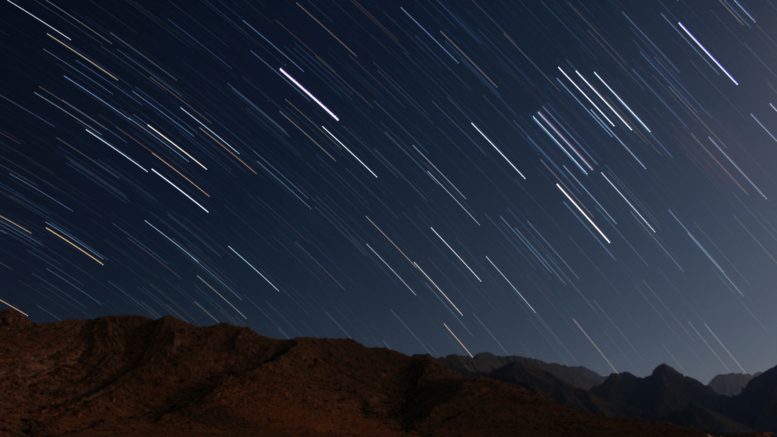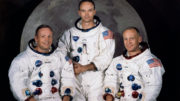Our universe is vast and open to many possibilities, leading many scholars to explore the unknown. In recent times, our technology has advanced and with those technological advancements opportunities to learn about our universe have evolved.
While astronomers have always pondered the thought that there might be large amounts of water in outer space, it was not confirmed. In 2011, scientists discovered the largest and oldest mass of water in the universe. Huge water vapor clouds are located 12 billion light years away from Earth. Astronomers have estimated these clouds to have approximately 140 trillion times more water than all of Earth’s oceans combined. The water vapor clouds surrounds a quasar, a super massive hole.
By 2015, they identified the quasar as the first quadruple quasar. It consists of four rare active black holes that are unusually close together. “If you find something theory says is very unlikely, you either have to conclude you got incredibly lucky, or that the theory is flawed,” said Dr. Hennawi of the Max Planck Institute for Astronomy in Heidelberg, Germany. The chances of finding the quadruple quasar is one in 10 million.
However, signs of water have been seen before. Pictures taken on Mars show rocks were gradually eroded water flows.
Scientists identified the water flow patterns as “splash.” This means that the crater rocks settled in the surrounding water, allowing lighter material to pile up behind it, which is why they have frozen muddy slopes. Scientists have also concluded that there must have been multiple floods given the deep channels. An example of this is the erosion marks on the Worcester Crater.
In addition, water has been found on the moon. Water was first found on the moon by a NASA-built instrument on India’s Chandrayaan-1 probe. They found that the moon is cold enough to keep water frozen at the surface based on detections of hydrogen.
In addition, on October 9, 2009, NASA’s LCROSS, or Lunar Crater Observing and Sensing Satellite, continued to search the moon and found that a thin film of water coats the surface of the soil in some areas. “Indeed, yes, we found water. We didn’t find just a little bit, we found a significant amount,” said Anthony Colaprete, LCROSS project scientist and principal investigator from NASA’s Ames Research Center at Moffett Field, Calif. The amount of water they found in their 20 meter crater when melted can potentially be used to drink or to extract hydrogen for rocket fuel.
However, water is not the only thing that scientists have found on their space travels. Astronomers have also found a few dwarf planets in our solar system. In 2007, a team of American astronomers found a planet covered in hot but solid water. It’s officially known as Gilese 436 b. Even though, the planet’s temperature reaches 439 C (712 K), it’s watery surface doesn’t evaporate. Instead it creates a hot, high-pressured ice.
Scientists have also found that its mass makes up 70-90 Earths. Nevertheless, in 2014, astronomers found a complete opposite to “The Hell Planet.” It’s an extremely cold white dwarf planet that is the same size as Earth. While white dwarf planets are not uncommon, they are hard to notice. White dwarf planets are extremely dense and packed with carbon and oxygen making them burn at an extremely slow rate.
This is the reason scientists have estimated the planet to be as old as the Milky Way, which is about 13 billion years old. “This is cool once you think about [it]. There might be other dwarf planets in our solar system that we just haven’t been able to find, but have been there the whole time,” said Monica Gonzalez (’17).
Despite the idea that foreign planets are uninhabitable, astronomers have proven this thought is wrong. Since the discovery of the first planet orbiting a sun-like star in 1995, scientists have found over 1,000 alien planets. More than half of these discoveries were made by NASA’s Kepler space telescope, which was launched in 2009 to determine how common Earth-like planets are in the Milky Way galaxy.
They have found six planets that are the most Earth-like. These planets are the Gliese 667Cc, the Kepler-22b, the Kepler- 69c, the Kepler-62f, the Kepler-186f, and the Kepler-452b. “Finding a habitable zone planet comparable to Earth in size is a major step forward,” said Elisa Quintana, research scientist at the SETI Institute at NASA’s Ames Research Center in Moffett Field, California, and lead author of the paper published today in the Journal Science.
Finding Earth-like habitable planets is a dream for astronomers. NASA astronaut Scott Kelly thought his orange zinnias aboard the International Space Station were the first flowers to bloom in space, they were nott. In 2012, Don Petit grew different types of plants aboard a NASA station deemed a “personal biology experiment.” Petit’s sunflower was the first flower grown aboard the International Space Station.


